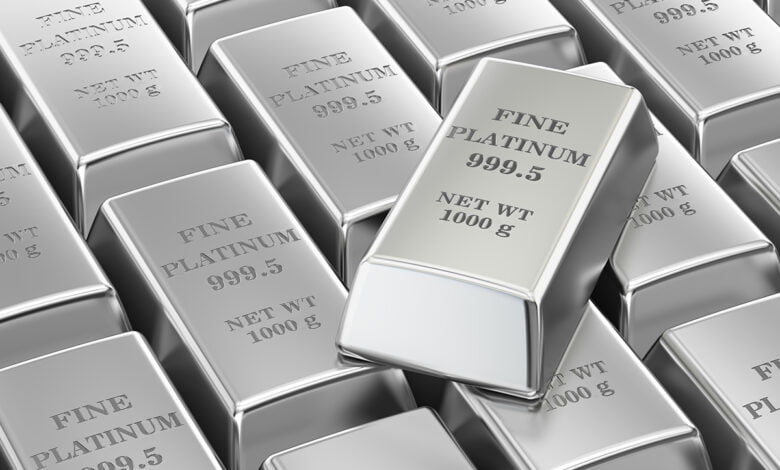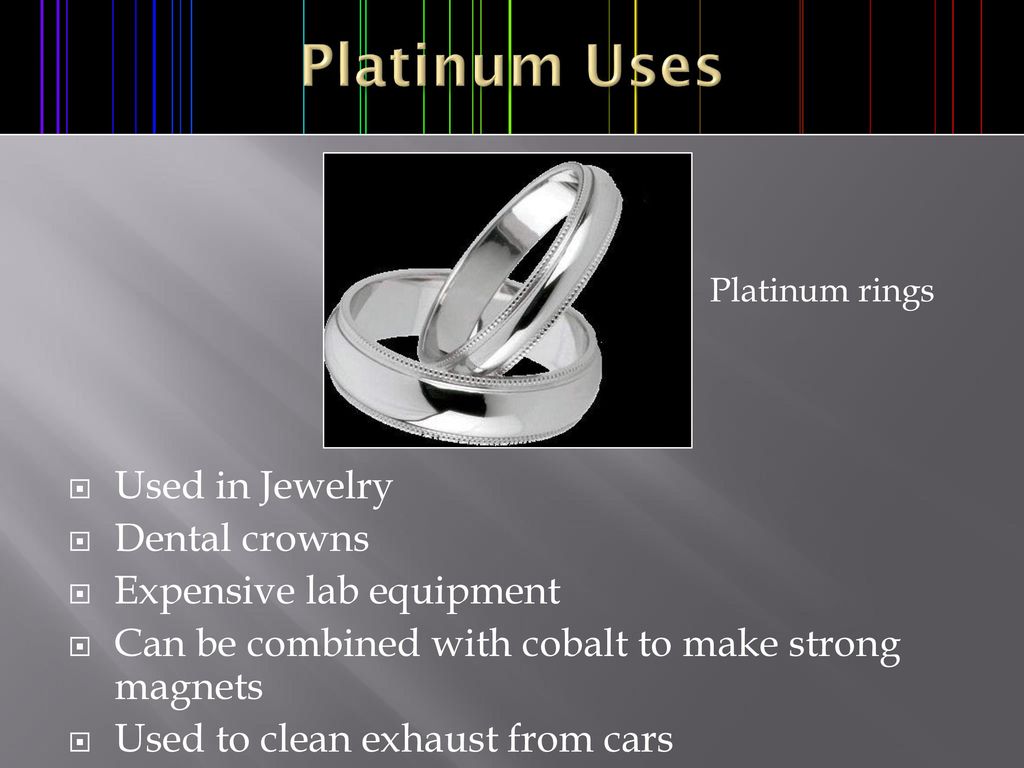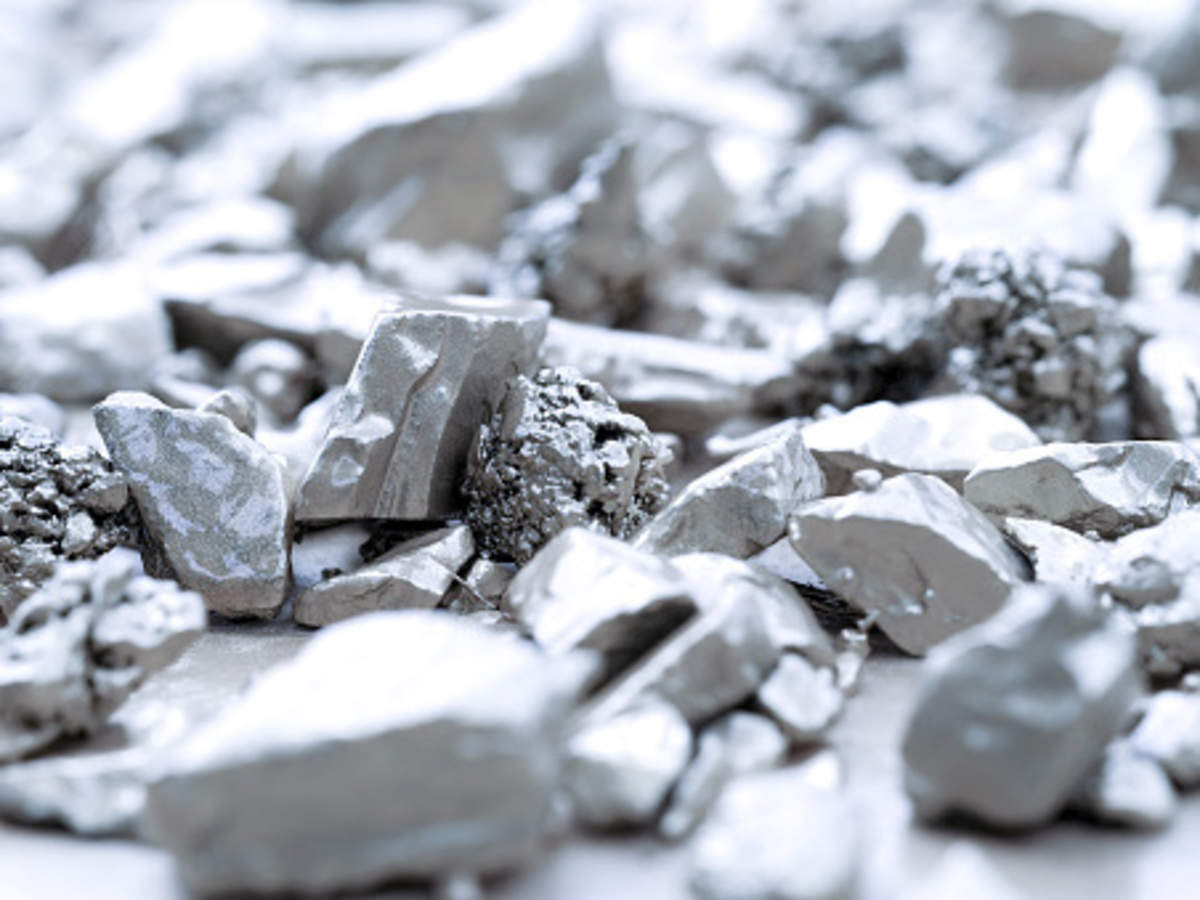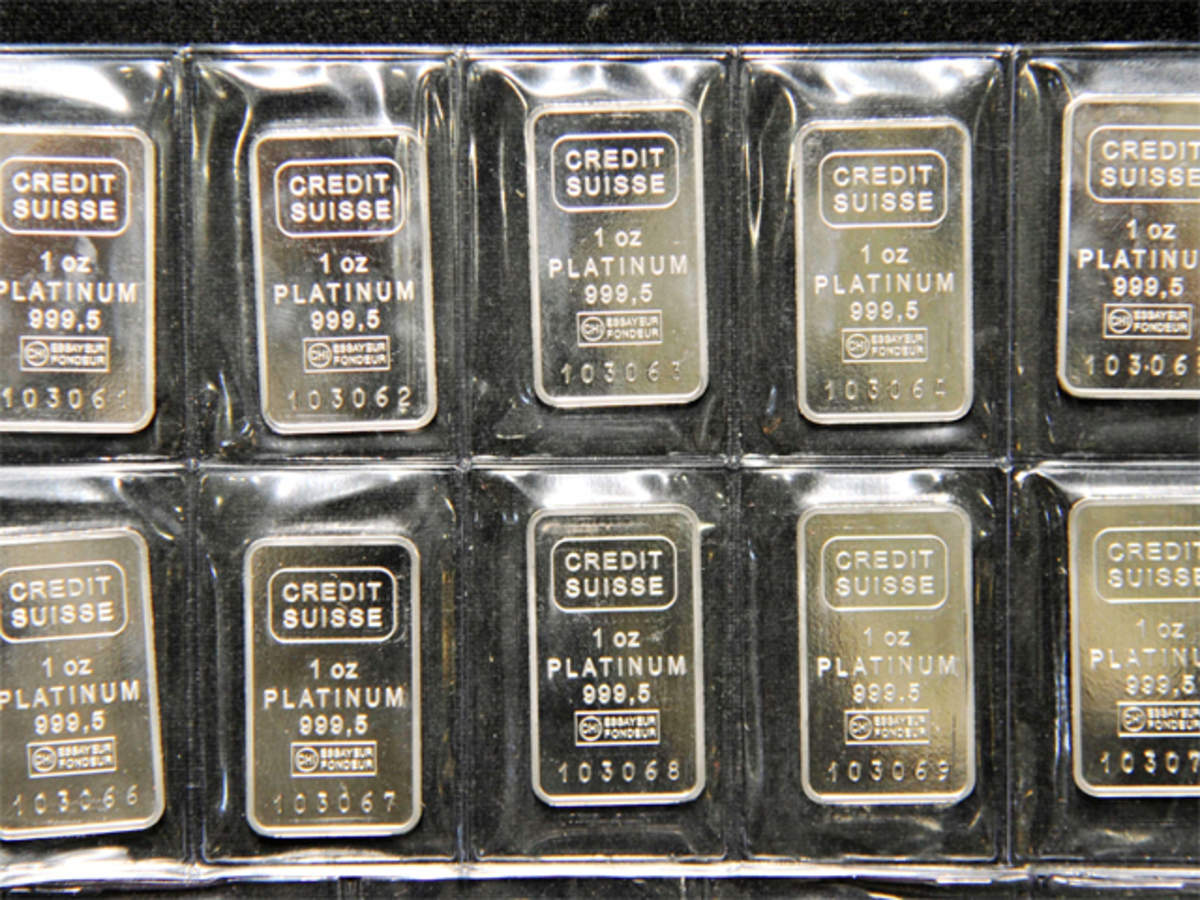Platinum price forecast for the year 2022, should you invest in it?

Platinum price forecast for the year 2022, should you invest in it?
It’s easy to neglect Platinum in favor of more well-known metals like gold and silver when considering precious metal investments. Platinum, like gold, is used in industry and being a valuable metal, although the demand for each metal is somewhat different. Each year, over 75% of the world’s gold output is used in coins, bars, and jewelry. Nearly 65 percent of the world’s supply of Platinum, on the other hand, is headed for industrial or automotive applications. This implies that Platinum’s price is majorly influenced by industrial demand.
Platinum is similarly difficult to come by. As you probably expect, mining for gold takes a long time – but it’s even more difficult if you’re seeking Platinum! This is because Platinum is one of the rarest metals on the planet, 30 times rarer than gold. Even though gold has been found out on every continent except Antarctica, the World Platinum Council estimates that just four countries have major platinum mining activities. South Africa has the most platinum deposits, accounting for more than 80% of global reserves.
Because of its scarcity, all of the Platinum ever mined would only be enough to cover your ankles in one Olympic-sized swimming pool. Many people estimate that all of the gold ever mined would fill three Olympic-sized swimming pools.
The Many Practical Uses of Platinum
Platinum has a wide range of industrial applications, and thus even though it is extremely rare, it is nevertheless in great demand in some industries. When it comes to catalytic converters for car exhaust, the automobile industry relies majorly on Platinum. Because Platinum is used in the exhaust system to eliminate toxic pollutants, making them more ecologically friendly, this is the case.

Platinum is used in several technological, medicinal, and biological applications, including surgical equipment, and can even be used to treat some malignancies. Platinum’s industrial demand has nearly quadrupled since 1980, thanks to the metal’s flexibility. But, what does this mean for Platinum being an investment?
Platinum being an Investment
Platinum’s price is determined mostly by industrial demand because of its wide range of applications. When looking at a longer time frame, however, the price of Platinum follows a similar pattern to that of gold (the most actively traded precious metal) and copper (the most actively traded industrial metal).
However, the price of Platinum may be erratic, especially when assessed over a shorter time period, and many market experts believe it is now undervalued. Due partly to the influence of COVID-19 on financial markets, gold broke beyond the USD 2,000 per troy ounce barrier for the first time in July 2020. This major price gain was hailed being a new high for gold. On the other hand, Platinum first broke beyond the $2,000 barrier in May 2008 and came near again in 2011.
Today’s platinum prices, on the other hand, are completely different. While gold was still trading at about $2,000 per ounce at the start of January 2021, Platinum was just about half that price at a little over $1,000. Platinum’s price has continuously grown since then, reaching a six-year high at the start of February 2021.
Even though this looked to be a major rise, many pointed to the price differential between Platinum and palladium, even though their industrial applications are roughly similar. Similarly, expectations of increased industrial demand and tighter emission rules in the future have prompted some to predict that platinum prices will continue to grow.
How can I make an investment in Platinum?
Platinum may be invested in many of the same ways other precious metals do, so if you want to diversify your portfolio with this precious metal, you have a lot of alternatives. Many new people to precious metal investing prefer DigiGold, which comes in gold, silver, and Platinum. You may register with The Royal Mint and fund your investing account using a debit card or a bank transfer. You will be able to purchase and sell gold, silver, and Platinum at current market rates.
One of the biggest benefits of DigiGold is the ease of storage and insurance, because the metals are never transferred to you and are instead safely held at The Royal Mint. Furthermore, DigiGold is provided by value rather than weight. This implies that you may start investing in Platinum with a little investment of only £25.
Many investors choose to take delivery of their precious metals and keep them at home or a storage facility of their choosing, even though this option is appealing to many. Platinum may be acquired directly from The Royal Mint in the shape of coins or bars.
Platinum is provided in several of our popular bullion collections, including the Britannia and Queen’s Beasts collections. While most platinum coins are only available in 1oz sizes, bars are available in sizes ranging from 1oz to 1kg, making them a convenient alternative to buying larger amounts.
Platinum price forecast
Platinum is up year to date (March 17), but it has dropped in the last week after reaching its highest level in June 2021 due to concerns about the impact of the Russia-Ukraine war on supply.
The global platinum market was massively oversupplied in 2021, according to the World Platinum Investment Council (WPIC), which forecasts another major excess this year.
Platinum, along with palladium and rhodium, is used to neutralize exhaust pollutants in automobiles and glassmaking, jewelry, and being an investment.

“We have the highest excess we’ve ever had, yet the market remains tight,” said Trevor Raymond, WPIC’s head of research.
According to Raymond, a sharp increase in palladium prices prompted by the situation in Ukraine probably prompt automakers to switch to cheaper Platinum more quickly to save money, boosting demand.
Russia produces around 25-30% of the world’s palladium and 7-10% of the world’s Platinum. Palladium prices have reached new highs above $3,000 per ounce because of concerns about Russian exports. Platinum prices have grown more slowly, to roughly $1,170 per ounce.
The WPIC estimated that the roughly 8 million ounces per year market was 1.23 million ounces oversupplied in 2021, with a surplus of 652,000 ounces expected in 2022. According to the report, platinum production increased by 21% last year, while demand decreased by 9%.
However, massive platinum imports into China, much of it by speculators taking advantage of low prices, depleted the market surplus in 2021, according to the WPIC.
According to the council, the platinum supply should shrink 1% in 2022 because a backlog of semi-processed material in South Africa runs out.
Demand, which fell last year because a dramatic reduction in investor purchases more than offset greater consumption by industry and jewelers, is forecast to climb by 7% in 2022, according to the company.
Despite decreased vehicle manufacturing owing to a chip shortage, higher platinum loadings in heavy-duty vehicles in China, and the substitution of palladium for Platinum boosted demand from the auto sector, according to the council.
What impact may the conflict have on the supply/demand balance, and what do the most recent platinum price forecasts mean for investors?
Platinum has almost definitely disappointed investors more than any other commodity over the last five years. Most of the others have enjoyed a brief spell in the spotlight, but Platinum has been a disaster. It will see the light of day. The issue is, when will it happen?
There are three compelling reasons why platinum is now less expensive than gold.
We tend to conceive of Platinum because being more expensive than gold, which is why platinum credit cards have higher prestige than gold, and Platinum (one million units sold) is the highest level of record certification (half a million units).
Platinum has always been the more costly metal, which makes sense given its rarity. The price of Platinum is usually 1.25 times that of gold.
With gold trading at roughly $1,800 per ounce, the platinum price should be around $2,250 per ounce.
But it isn’t; it isn’t even trading at half that price. It isn’t even trading at $1,000 per ounce – it is now trading at $980. Platinum will be half the price of gold in the next week if it continues on its current path. It was treble the price of gold only 15 years ago.
What went wrong with this performance? there are three reasons.
Cars- Catalytic converters in diesel engines employ platinum to oxidize carbon monoxide.; investment – people purchase Platinum for the same reasons they buy gold and silver; and jewelry – Platinum is used in catalytic converters to oxidize carbon monoxide in diesel engines.
Demand for diesel automobiles had plunged since the Volkswagen diesel disaster in late 2015 when it was disclosed that diesel engines were not clean, they were claimed to be. Unfavorable taxes have exacerbated this.
Meanwhile, many of the investors who could have bought Platinum in the 2000s are now buying bitcoin. The speculative anti-inflation market has shifted to cryptocurrency.
Platinum isn’t enough popular like it was ten years ago in terms of jewelry because it’s now worthless, and jewelry is a status symbol.
The supply of Platinum is highly concentrated: the Bushveld region of South Africa accounts for more than 70% of the yearly world supply. The market is incredibly susceptible to only one single point of failure. If something major goes wrong there — strikes, power outages, natural disasters, political upheaval – the platinum market will be severely impacted. Platinum owners, on the other hand, will make out like bandits.
But, for the time being, everything is well.
According to the World Platinum Investment Council’s quarterly report released last week, platinum mine supply “continues to recover progressively from the Covid-19-related operational difficulties” and is up 13% year over year this quarter. The total mine supply is predicted to increase by 25% in 2021 compared to the previous year.
Recycling is another key supply source, which has decreased by 9% this quarter, although total supply is still up by more than 7%.
Meanwhile, due to a lack of semiconductor chips, automobile manufacturing has not expanded as much as expected – just 3% in 2020 – putting pressure on platinum demand.
However, as emissions legislation becomes more stringent, platinum loadings in catalytic converters will increase. Due to the high price of palladium, some replacement has begun, with Platinum being used in place of palladium in different types of engines.
Vehicle demand is expected to rise next year, which should be positive for Platinum, while the palladium price has plummeted, so less replacement is probable.
Platinum market in supply surplus

Platinum has tangible uses in the industrial, automotive, and jewelry industries and is an investment commodity used as a portfolio hedge with other precious metals. According to the World Platinum Investment Council, demand for Platinum climbed by 21%, or 283,000 ounces, from last year’s third to fourth quarters (WPIC). Despite the persistent difficulty in car production owing to an ongoing semiconductor supply constraint, the growth was driven by robust demand from the jewelry and industrial sectors and improved automotive demand.
According to WPIC, “ongoing strength in the bar and coin demand was settled by continuous reductions in ETF holdings and stocks held by exchanges (primarily NYMEX), albeit at lower rates than in Q3 ’21.”
Despite the rise in demand, a small surplus of 107,000 ounces in the first half of the year increased to 1.125 million ounces in the second half, resulting in a year-to-date surplus of 1.232 million ounces. According to WPIC,
“The big escalation in the second half was caused by accelerated processing of Anglo American Platinum’s ACP semi-finished inventory, which drove up refined metal supply (up 219,000 oz half-on-half), semiconductor shortages, which reduced vehicle production and automotive platinum demand (down 144,000 oz half-on-half), and the large reduction in ETF holdings and NYMEX stocks,” says the report (a half-on-half fall of 814,000 oz).
In the second half of last year, there was less interest in investing in Platinum, which resulted in lower full-year investment demand being negative by 43,000 ounces, down from a record high of 1.546 million ounces in 2020. In 2021, worldwide platinum production climbed by 21%, while demand decreased by 9%.
However, the spot market tightened in the second half of the year, according to WPIC, as physical Platinum in London and Zurich was said to be difficult to come by, suggesting continued high speculative demand from China.
Heraeus Precious Metals, demand for platinum jewelry was mixed in the fourth quarter. Platinum jewelry sales in China have decreased, while gold jewelry sales have climbed. In the fourth quarter, Indian platinum jewelry sales increased by 35-40%, increasing consumer confidence during the festival and wedding season, when jewelry is purchased as presents and investments. The Chinese jewelry industry is predicted to contract by 5% in 2022 as the Chinese economy slows further, somewhat offset by increased demand from India and Japan.
The platinum price declined 10.8% in 2021 as the supply glut expanded, after spiking to $1,308 an ounce in mid-February from $1,078 at the end of 2020, before completing the year at $962. The price rose beyond $1,000 again in January, then fell in early February. In reaction to the developing Russia-Ukraine war, it began to rise in the second part of the month. Concerns over the war’s influence on platinum supplies from Russia and Ukraine boosted platinum to $1,170 per ounce on March 8.
According to data gathered by Dutch bank ABN Amro, Russia accounts for 11% of global platinum mining output, producing 19,000kg of the total 180,000kg, making it the world’s second-largest producer. With Western countries stepping up sanctions against Russia, foreign purchasers’ inability to pay for Russian metal probably lead to short-term platinum supply problems.
Nornickel, a Russian company, is the world’s largest palladium producer, responsible for more than 40% of the global supply. In the long run, demand for Russian palladium may decline due to record-high costs and ethical issues, pushing automakers to move to Platinum in the form of a substitute.
What does this indicate for platinum prices in the near term and over several years?
Platinum, like other commodities, has been selling off in recent days, with the metal trading low with $1,018 on March 16 due to profit-taking after a rapid surge. What do you think the pricing will do in the future?

Platinum price forecast: Will the price retreat or reach new highs?
In their daily market commentary on March 16, analysts at US brokerage firm Zaner stated: “As in other precious metal markets, the platinum market saw expanding trading volume on the rally to $1,200 last week, which probably left the market vulnerable to the massive stop-loss selling wave this week, and perhaps that force has now run its course.” The price of critical support has dropped to $983.70.”
According to research by Canadian bank TD Securities over the last 60 days, mean-reversion signals have excelled in precious industrial metals, indicating that these metals may still be technically overbought.
“Aside from the continuous increase, the PGMs market should be keeping an eye on semiconductor supply.” In recent research, experts at Australian bank ANZ warned that “any disruption in chip supply probably postpone the recovery of car catalyst demand.” According to the bank’s long-term forecast, platinum prices are expected to rise from $1,100 an ounce at the end of March to $1,300 by the end of 2022 and $1,375 by the end of September 2023.
“Many of the same themes that dominated the second half of 2021 continue to dominate the outlook for 2022,” according to the WPIC report, “with the additional overlay of inflation concerns and without the major additional refined platinum flows from the unwinding of Anglo American’s semi-finished ACP inventory.”
In 2022, demand is predicted to increase by 7%, or 520,000 ounces, while supply is expected to decrease by 1% or 61,000 ounces. The automotive industry’s demand is expected to increase by 509,000 ounces or 19 percent but will be constrained by the current semiconductor shortfall. The demand for jewelry is predicted to remain stable, with a small increase of 25,000 ounces. With glass and chemical plant construction slowing after a record year in 2021, industrial demand is predicted to fall by 387,000 ounces or 15%.
After dropping by 43,000 ounces in 2021, investment demand is expected to grow by 329,000 ounces in 2022. According to the WPIC, the platinum market surplus will be 652,000 ounces this year, down from 1.232 million ounces last year.
Heraeus writes,
“The platinum market (ex. investment) is in large surplus, and ruthenium is similarly surplus.” “Because of the present high palladium prices, more Platinum probably be utilized in gasoline autocatalysts. Due to rising palladium prices in recent years, some platinum has already been substituted in gasoline three-way catalysts. With the price of palladium hitting new highs, the implementation of this technology probably be accelerated, favoring Platinum over palladium.”
According to Heraeus due to operational challenges at smelting operations, South African platinum output is not expected to match up with last year. According to Heraeus, platinum is expected to trade between $1,300 and $850 in 2022.
According to Trading Economics experts, platinum was predicted to sell at $996.27 by the end of the quarter, and $931.05 in a year at the time of writing (March 17).
What about the long-term prospects? In ten years, how much will Platinum be worth?
Platinum long-term forecast 2022-2030

According to Wallet Investor’s long-term estimate, platinum is expected to trade in the $1,000-$1,200 area in 2022 and 2023, then break out of the range to trade above $1,300 by the end of 2025. The price may rise to $1,515.94 by March 2027.
The platinum price is expected to reach $1,593 by the end of 2025, $2,857 by the end of 2030, and $3,309 by the end of 2033, according to CoinPriceForecast, putting it on course for even greater rises by 2040.
It’s important to note that financial markets are still extremely volatile, making it hard to predict the platinum price within hours and much more difficult to make long-term projections. As a result, experts can and do make predictions that are incorrect.
We recommend that you undertake research and assess the latest market trends, news, technical and fundamental analysis, and professional opinion before making any investing decisions.
Past success is no guarantee of future success. Never put more money into an investment than you can afford to lose.
Platinum isn’t in limited supply, but if green hydrogen takes off, it will be.
Demand for bars and coins is increasing, but flows into exchange-traded funds (ETFs) decrease. Many people are shifting away from ETFs and towards dividend-paying miners and the much more volatile crypto markets. The demand for coins and bars, on the other hand, should continue.
When it comes to jewelry, the Chinese choose gold and are the biggest customers. Because it is fashion, it may (and will) change, but this is the present style.
For years, Platinum was in short supply. Annual demand outstripped supply, causing prices to rise. Because there is now an oversupply, it is difficult to get enthused about this market. That won’t endure indefinitely.
Green hydrogen, which seems to be the greatest way to decarbonize, represents the light at the end of the tunnel for platinum investors. Platinum is used in both water electrolyzers and hydrogen fuel cells, which may power fuel cell electric cars. Platinum is important for liberating hydrogen and, being a result, for achieving global net-zero ambitions.
This is usually known, yet the market is now in a “meh” mood. That probably indicate that green hydrogen is too far off in the future for the market to care, that the market does not trust politicians on net-zero, or simply that the market is incorrect. Or a combination of the three.
Overall, it seems like Platinum’s doldrums will continue for the time being. Until they don’t, that is. Then, like we saw with uranium earlier this year, it will be self-evident that everyone should hold some platinum in their portfolio.
When the market is dull, and no one is paying attention, it’s good to purchase, wait, and gloat.




